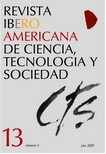Development of Graduate Education in Chile
DOI:
https://doi.org/10.52712/issn.1850-0013-859Keywords:
graduate studies, human capital, enrollment, scholarships, public resourcesAbstract
This paper analyses the graduate studies in Chile during the last four decades. The target population includes academic programs (master and doctoral programs) and professional oriented studies (diplomas and medical specializations). The number of programs has increased in the laste decade, moving from 47 to 135 doctoral programs and from 234 to 630 in the master level. The enrollment has also increased. It went from 1100 to 3000 doctoral students and from 8400 to 18.400 master students. There are 7100 researchers working in research, innovation and development, an average of 450 researchers per million of people. Several public fellowships give out scholarships. However, there is not enough data to estimate the total of resources spent in highly qualified human resources. This paper recommends the strengthening and the articulation of scholarship programs, especially in natural sciences. Similarly, quality assurance and international cooperation is suggested to be reinforced in order to improve the current academic offering.
Downloads
References
AGCI (2007): Gestión de la Agencia de Cooperación Internacional de Chile 2007, Santiago de Chile, AGCI.
AYARZA, H. y GONZÁLEZ, L. E. (1998): Reconocimiento y Convalidación de Estudios Superiores y Títulos Profesionales en América Latina, Santiago, CINDA.
AYARZA, H. y GONZÁLEZ, L. E. (1994): Política y Gestión Universitaria, Santiago de Chile, CINDA.
BUSTOS, E. (2004). Diagnóstico y Perspectivas de los Estudios de Posgrado en Chile. IES/2004/ED/PI/59, Santiago de Chile, UNESCO/IESALC. Disponible en: http://www.iesalc.unesco.org.ve.
CINDA (2007): Educación Superior en Iberoamérica. Informe 2007, Santiago de Chile, CINDA.
CNIC (2008): Sobre el Consejo. Disponible en: http://www.cnic.cl.
CONICYT (2006): Formación de Recursos Humanos y Becas. Disponible en: http://www.conicyt.cl
CONICYT (2007a): Elementos para la definición de la Estrategia de Innovación, Santiago de Chile, CONICYT.
CONICYT (2007b): Memoria Programa Becas, Santiago de Chile, CONICYT. Disponible en: http://www.conicyt.cl
CONICYT (2008): Más ciencia y tecnología para el desarrollo de Chile, Santiago de Chile, CONICYT.
CONSEJO DE RECTORES y CONICYT (2004): Indicadores Científicos Tecnológicos - 2004. Disponible en: http://www.conicyt.cl/indicadores/formacion/formacion.html.
CONSEJO SUPERIOR DE EDUCACIÓN (2004): Estadisticas. Disponible en: http://www.cse.cl/Asp/Estadisticas2005/webCSE_EPosgrado2004_2006.xls.
CONSEJO SUPERIOR DE EDUCACIÓN (2005): Estadísticas. Disponible en: http//www.cse.cl/Asp/Estadisticas 2005/webcse.Ematrtotalpostexls.
DEVÉS, R. y MARSHALL, M. T. (2008): “El Desarrollo del Posgrado en Chile”, en J. J. Brunner y C. Peña (Eds.): Reforma a la educación superior, Santiago de Chile, Ediciones U. Diego Portales, pp. 265-304.
EL MERCURIO (2003): “Tomo 3 de 3: Indicadores, Números y Datos sobre Instituciones y Carreras de Educación Superior”, Suplemento Índices 2004, Santiago de Chile, Empresa Periodística El Mercurio, 19 de Noviembre de 2003.
ESPINOZA, O. y GONZÁLEZ, L. E. (2008): “Los estudios de Posgrado en Chile Diagnóstico y Proyecciones”, Revista Argentina de Educación Superior (en revisión por el comité editorial).
FERRANDO, G. (2003): “Evaluación de la calidad de la educación continua. Posgrados y postítulos”, Estudios de Posgrado. Perspectivas y Desafíos, Santiago de Chile, CSE.
GOBIERNO DE CHILE (2009): Sistema Bicentenario Becas Chile. Disponible en: http//:www.becaschile.cl.
GONZÁLEZ, L. E. (2003): Los nuevos proveedores externos de educación superior en Chile, Santiago de Chile, IESALC/UNESCO.
IBARRA, C. (2007): Información y Análisis de los programas de desarrollo de Capital Humano y Antecedentes relativos a la formación de nivel terciario - Informe Final, Santiago de Chile, CNIC.
LARSEN, K., MARTIN, J. y MORRIS, R. (2002): Trade in educational Services: Trends and Emerging Issues, OECD (en elaboración).
LEMAITRE, M. J. (2003): Is Quality Assurance Possible in a Global Environment?Santiago de Chile, Comisión Nacional de Acreditación de Pregrado.
MIDEPLAN (2008): Presentación. Disponible en: http//:www.mideplan.cl.
MINEDUC (2006). Programa MECESUP. Educación de Posgrado. Doctorados. Resumen de Implementación. 1999-2005, Santiago de Chile.
MINEDUC (1990): Ley Orgánica Constitucional de Enseñanza, Valparaíso, Congreso Nacional.
MINISTERIO DE RELACIONES EXTERIORES DE CHILE (2000): Comité exportador de servicios universitarios. Taller de Planificación Estratégica, Santiago de Chile.
PAULUS, N. (2003): “Características de la oferta de programas MBA en Chile durante el año 2003”, Estudios de Posgrado: Perspectivas y desafíos, Santiago de Chile, CSE.
SARRAZÍN, M. (1998): Los programas de posgrado en Chile, Santiago de Chile, CONICYT.
SPENCER, E. (2003): “Políticas para el desarrollo de un sistema nacional de cuarto nivel”, Estudios de Posgrado: Perspectivas y desafíos, Santiago de Chile, CSE.
UNIVERSIDAD DE CHILE (1997): Política de Internacionalización de la Universidad de Chile, Santiago de Chile, Universidad de Chile.
UNESCO (1998). Anuario Estadístico 1998, Paris, UNESCO.
Downloads
Published
How to Cite
Issue
Section
License
Copyright (c) 2025 CC Attribution 4.0

This work is licensed under a Creative Commons Attribution 4.0 International License.
All CTS's issues and academic articles are under a CC-BY license.
Since 2007, CTS has provided open and free access to all its contents, including the complete archive of its quarterly edition and the different products presented in its electronic platform. This decision is based on the belief that offering free access to published materials helps to build a greater and better exchange of knowledge.
In turn, for the quarterly edition, CTS allows institutional and thematic repositories, as well as personal web pages, to self-archive articles in their post-print or editorial version, immediately after the publication of the final version of each issue and under the condition that a link to the original source will be incorporated into the self-archive.











